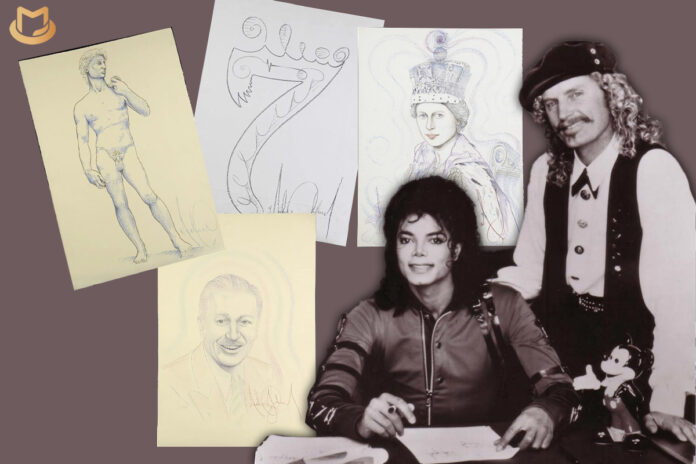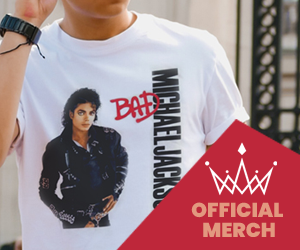When we posted about the Michael Jackson drawings going on auction, few comments on social media picked up on “This auction is not affiliated with or endorsed by the Jackson Estate. This auction is court mandated by the Santa Monica Court.”
While the Estate is questioning the authenticity of the drawings, why this auction has been mandated by the court?
The sale has been compelled by the Superior Court of California amid litigation between investment group Vinson Investments and the Jackson-Strong Alliance, the art business partnership between Michael Jackson and Australian sculptor Brett-Livingstone Strong.
Strong claims that Jackson assigned him the copyrights to his artworks in early 2009; the artist was reportedly also advised of such by Tohme Tohme, Jackson’s final business manager. In 2011, according to a report in Star, Strong sold the 182-piece collection to an undisclosed buyer for $87.7 million without the knowledge of the Jackson estate. Lawyers for the singer’s family attempted to block the sale, the publication reported, and it appears to not have gone ahead.
The latest developments stem from a dispute over a loan Strong acquired from Vinson Investments, which required the transfer of the Jackson artworks to the firm, the artist charged in court documents obtained by Artnet News. He accused Vinson Investments of usury, the practice of lending money at unreasonably high interest rates.
The parties reached a settlement agreement in May 2023 but a sale or auction of the works did not yet occur, even after Vinson Investments filed a number of court documents attempting to force the auction; it also asked for Strong be held in contempt. The sale appears to have been compelled now because Strong owes hundreds of thousands of dollars in debt to creditors who have requested that the auction proceeds be used to settle his accounts.
Court documents also reveal that Strong had sought to land the auction with Sotheby’s, Christie’s, or Guernsey’s, before King’s Auctions was chosen by Vinson Investments as its preferred auction house for the sale. It was not clear from the court documents why the larger auction houses were not tapped for the sale.
However, in January, Strong allegedly refused to allow King’s Auctions to take possession of the works. In a declaration made before Judge Mark Epstein, Catherine King, the head of the auction house, said her team was only able to access the collection in April and could only take a partial inventory.
The auction house was later able to inspect the trove and conduct proper inventories, but King’s testimony attests to the challenges the court faced in ending the litigation over Jackson’s artworks.
“As is shown, some of the artwork represented to be originals were, in fact, copies. Those are noted on the inventory list, and cannot be auctioned in this auction,” King confirmed in her declaration. A provided inventory shows that those copies included a self-portrait, and portraits of Abraham Lincoln, George H.W. Bush, and George Washington, among others.
A representative for King’s Auctions said by email that the auction house picked up the pieces from a jointly owned art vault in Santa Monica, to which the works had been moved after a November 2023 court mandate. King’s flew in music expert Roger Epperson from Houston to authenticate the works.
While Epperson has certified the pieces as original works and authenticated Jackson’s signature, the singer’s estate reportedly remains skeptical of the authenticity of the collection.
Strong’s lawyers have also asserted that the “unstructured sale of artwork” by Vinson Investments could “negatively impact the value realized” for the artwork, which would harm not only JSA, but other creditors of JSA. “The court should order that the paintings be sold in compliance with the agreement of the parties,” his lawyers said.
King and Vinson Investments contend that past sales of Jackson’s artwork “vary considerably.” The auction house previously estimated the total value of the collection to be about $5 million, though Strong previously suggested each artwork could be worth as much as $7 million.
“It is time for the works to be sold and the case to end,” Judge Mark Epstein wrote in his order. “The court simply lacks confidence in any promises that there is a better deal actually to be had.”




